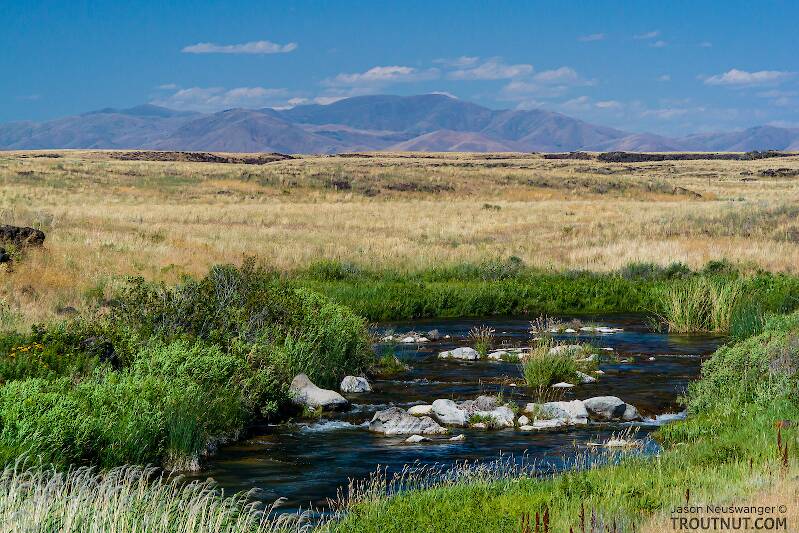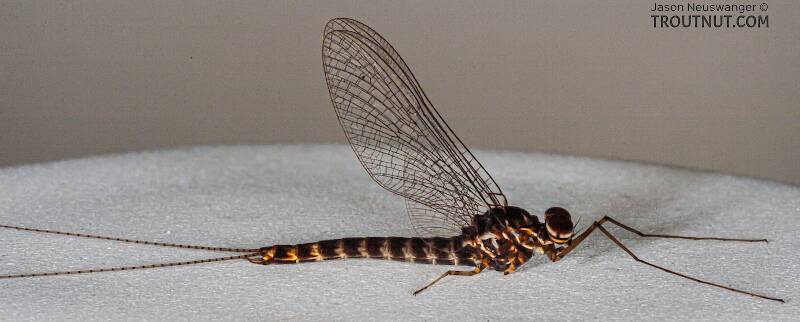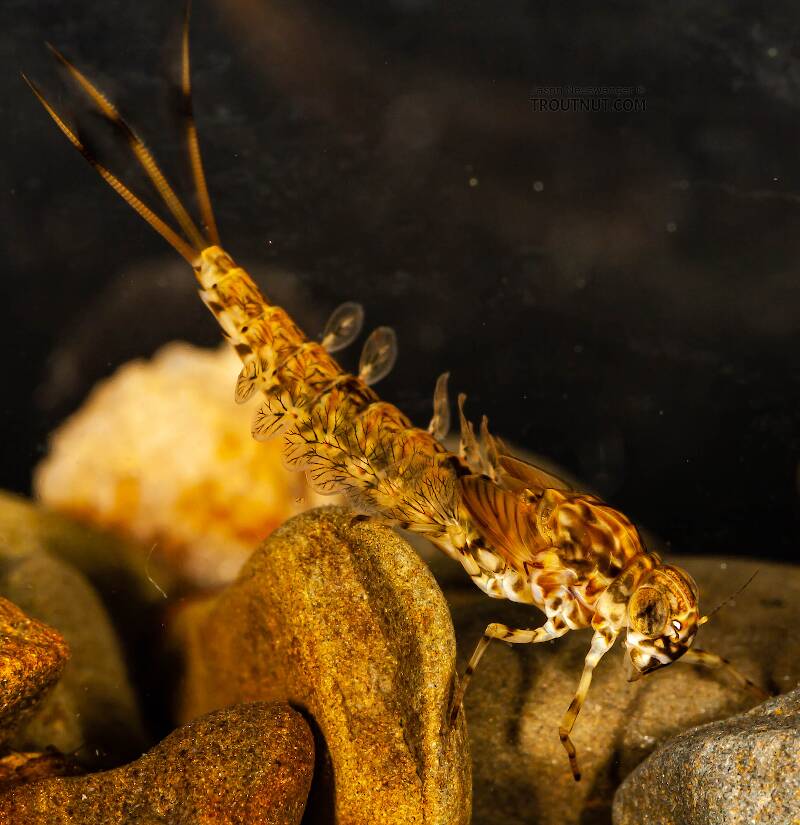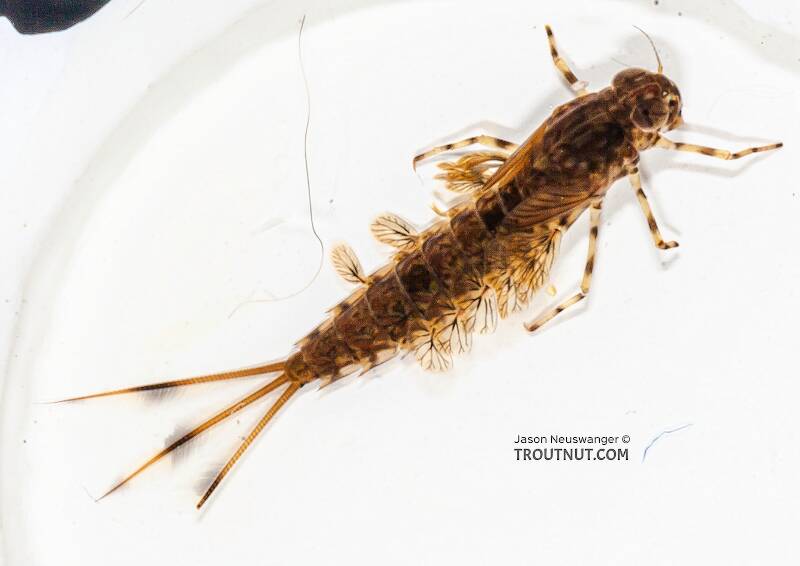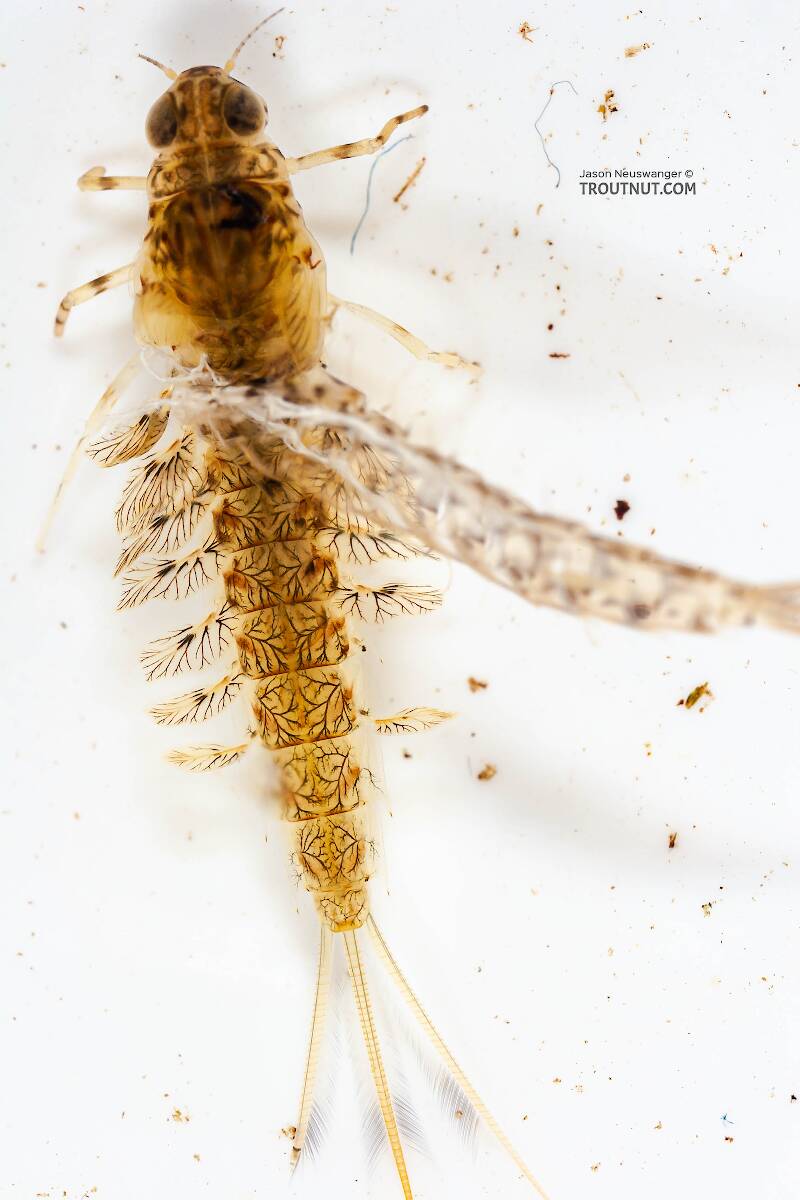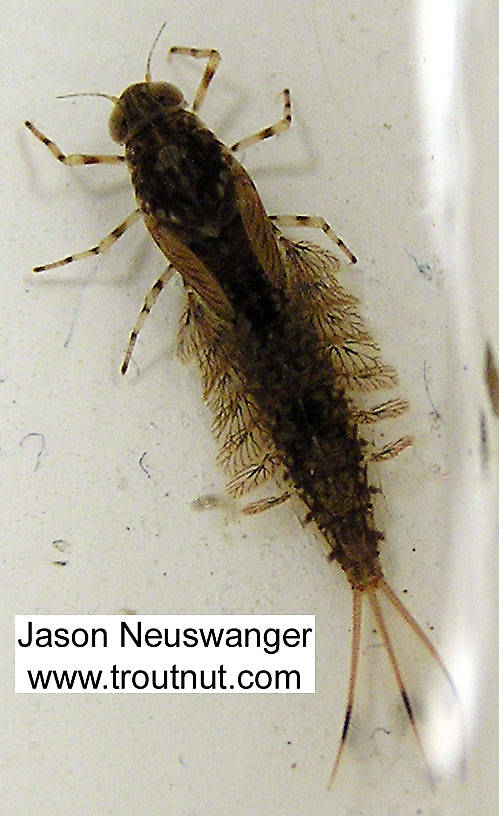
Hex Mayflies
Hexagenia limbata
The famous nocturnal Hex hatch of the Midwest (and a few other lucky locations) stirs to the surface mythically large brown trout that only touch streamers for the rest of the year.


Mayfly Species Siphlonurus quebecensis (Gray Drakes)
Species Range
Spinner behavior
Time of day: Dusk
Habitat: Riffles
They are large mayflies with the qualities trout enjoy, so pay close attention when you spot their swarms, but beware their reputation for disappointment.
Physical description
Most physical descriptions on Troutnut are direct or slightly edited quotes from the original scientific sources describing or updating the species, although there may be errors in copying them to this website. Such descriptions aren't always definitive, because species often turn out to be more variable than the original describers observed. In some cases, only a single specimen was described! However, they are useful starting points.
Male Spinner
Wing length: 12-13 mm
A handsome dark species, with more or less complete dark ventral U-shaped marks.
Head yellowish. Compound eyes purplish grey. Thorax reddish brown; pinkish markings on mesonota and metanota; sutures of pleura widely cream colored. Fore leg of male light reddish brown. Femur with a dark ring at basal joining, and a brown band near apex; apex yellowish. Tibia and tarsus concolorous, brown. Middle and hind legs yellowish; base of femur, apical femoral band, knee and joinings of other segments brown. Last three tarsal joints, and claws, washed with brown.
Wings hyaline. Veins dark purplish brown, except stigmatic cross veins, which are pale brown, almost obsolete along the subcosta. Stigmatic area opaque white. Stigmatic cross veins numerous, anastomosing at the middle of their length. A thickened spot at the bulla, on subcosta, radius and radial sector.
Abdomen dark reddish brown dorsally, with usual pale lateral triangles and dark oval marks. Tergites 8-10 brighter red in color, and with larger pale areas, which are often powdery white. Ventrally whitish, subhyaline. Each sternite typically has the usual dark lateral patches and oblique dark streaks, the latter joined at the anterior margin to form the U-shaped dark mark. Sternites 1-7 pale in the median area, on the posterior margin and the antero-lateral angle. Sternites 8 and 9 largely dark except for a pale median streak in the posterior half. Genitalia pale reddish brown. Penes distinctive in form (see fig. 123). Tails pale yellowish white. Each joining rather widely ringed with purplish brown.
Nymph
Specimens of the Mayfly Species Siphlonurus quebecensis
1 Female Dun
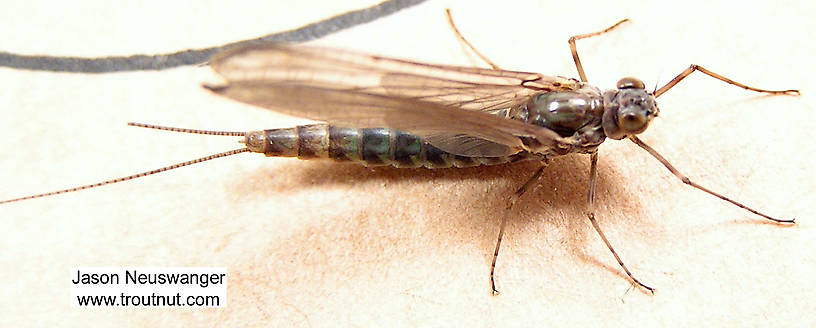
1 Male Spinner
1 Female Spinner
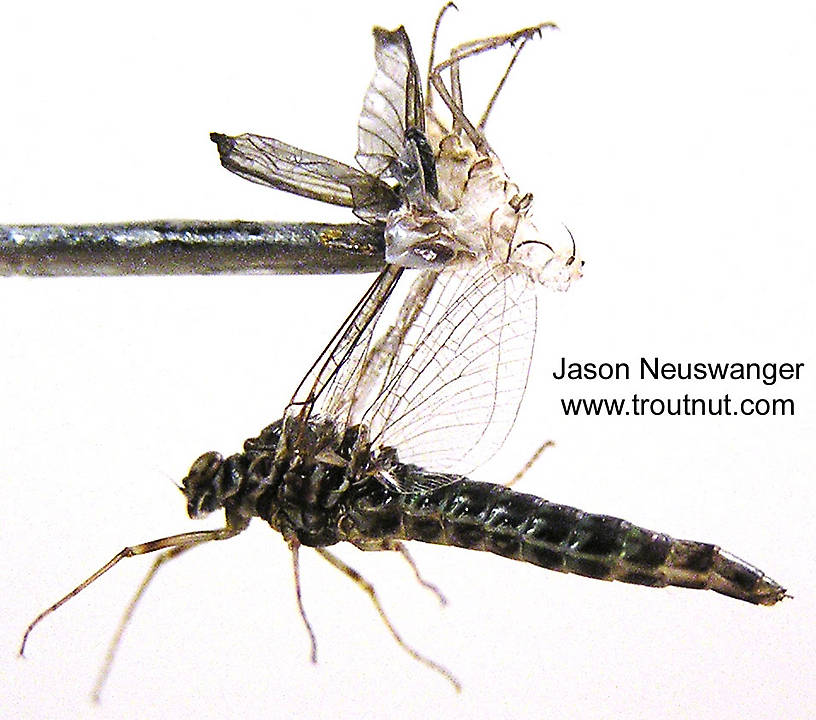
4 Nymphs
Start a Discussion of Siphlonurus quebecensis
References
- Arbona, Fred Jr. 1989. Mayflies, the Angler, and the Trout. Nick Lyons Books.
- Caucci, Al and Nastasi, Bob. 2004. Hatches II. The Lyons Press.
- Knopp, Malcolm and Robert Cormier. 1997. Mayflies: An Angler's Study of Trout Water Ephemeroptera . The Lyons Press.
- Leonard, Justin W. and Fannie A. Leonard. 1962. Mayflies of Michigan Trout Streams. Cranbrook Institute of Science.
- Needham, James G., Jay R. Traver, and Yin-Chi Hsu. 1935. The Biology of Mayflies. Comstock Publishing Company, Inc.
- Swisher, Doug and Carl Richards. 2000. Selective Trout. The Lyons Press.
Mayfly Species Siphlonurus quebecensis (Gray Drakes)
Species Range
Common Names
Resources
- NatureServe
- Integrated Taxonomic Information System
- Global Biodiversity Information Facility
- Described by Provancher (1878)

